Embroidery Styles Popular in Indian Women Ethnic Clothing!
India is a land of amazement with its infinite rich cultural heritage, rituals, customs, religions and more. The legacy of the country is further intensified with its rich architecture, art forms and crafts. One such mesmerizing art form is Indian embroidery, which has not just survived the tolls of time and innumerable invasions, in fact more than this. As a result, Indian embroidery has been influenced by various rich cultures and every Indian region has a different flavor of its own. Each style of embroidery has unique stitching and colors and it is easy to name the state they came from just by having a glimpse. If you want to know the most popular embroidery styles (there are millions of embroidery styles in India), Check them out here at Missprint.
Zardozi Embroidery
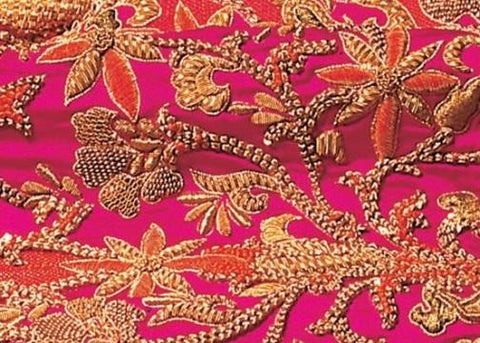
This ancient embroidery style has its lineage deep rooted in Persia and it flourished in India during the reign of Mughal emperor Akbar. Basically, it was considered a royal embroidery style as it was done using gold and silver threads along with pearls and precious stones. Even, the choice of fabric used to be regal. However, zardozi embroidery adapted itself with the test of time and hence, it is now done using silk threads and copper wire with golden or sliver polish. This change has not altered the royal feel of zardozi embroidery style and it is still the favorite among embroidered bridal lehengas, embroidered georgette kurtis and more.
Aari work
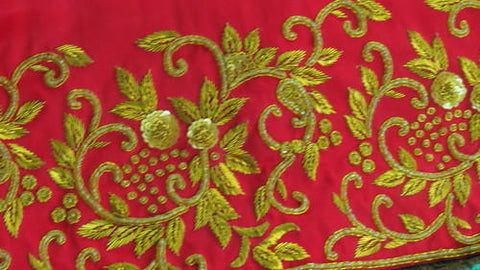
The list of most tedious needle works definitely call for the Aari embroidery, which traces out its emergence during the reign of Mughal emperors, way back in the 12th century. This art form came into limelight due to its traditional designs and floral motifs that is plain mesmerizing. It is also known as crewel work as a crewel (long hooked needle) is used to create fine and concentric rings of chain stitch. This fine embroidery creates intricate floral motifs and elegant traditional designs on embroidered Indo western dresses, kurtis, sarees and Indian suit sets.
Chikankari
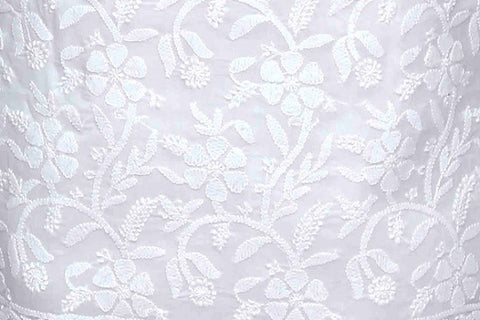
If you love to buy embroidered cotton kurtas online, you would easily find this delicate and intricate embroidery style of India, which is believed to be introduced in Indian subcontinent by the wife of Mughal emperor Jahangir. However, some references suggest that the origin of this embroidery style dates back to 3rd century BC. It is often associated with the Indian state, Uttar Pradesh and it flaunts flat, embossed and various other types of stiches popularly known as jail work. A chikankari piece is creating by first hand blocking patterns on the fabric and then embroidering the whole pattern. Earlier, the white-on white was the concept of this embroidery style that means, white threads were used on white fabric. Now gradually, it has shifted to various fabrics and colors and it could be easily found on embroidered cotton sarees, embroidered cotton kurtis and embroidered Indo western dresses. It is often referred as an art for those who have a classic taste.
Kantha
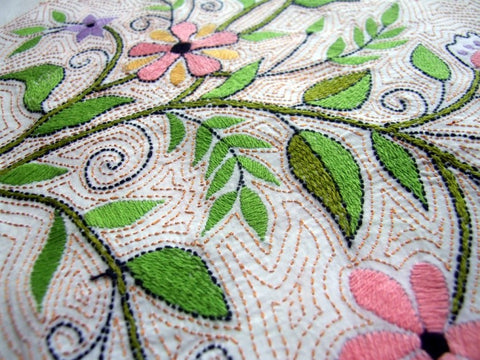
This is one of the traditional embroidery styles with roots in traditional folk art of Indian eastern regions. Classically it is used for silk sarees and soft dhotis but, nowadays, it could be found during embroidered cotton and georgette kurtas and Indo western dresses online shopping along with bed covers, wall hangings and upholstery online shopping. It is done using simple running stitch along the edges and the thread is usually drawn from the border of the used cloth. The quirky and interesting motifs of flowers, animals, birds and everyday activities are the chief textile patterns and designs used in this bright colored embroidery style.
Mirror work
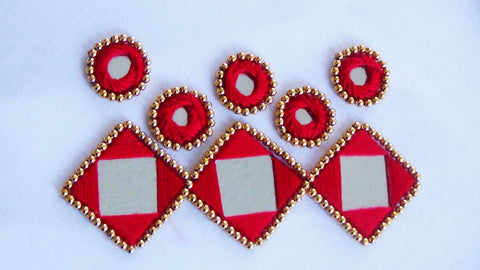
Popularly known as shisha in India, Mirror work hales from the Indian state of Gujarat and Rajasthan. It stands out from every other embroidery style due to the use of colorful threads and small pieces of mirrors. This style of embroidery includes other types of embroideries and stitches combined with large and small pieces of mirrors. While this embroidery style adorns the embroidered georgette kurtis, embroidered cotton kurtas and Indo western dresses, it is also used to adorn accessories, bags, decorative pieces and home décor. The use of colorful threads in this style makes it even more versatile and center of attraction.
Phulkari
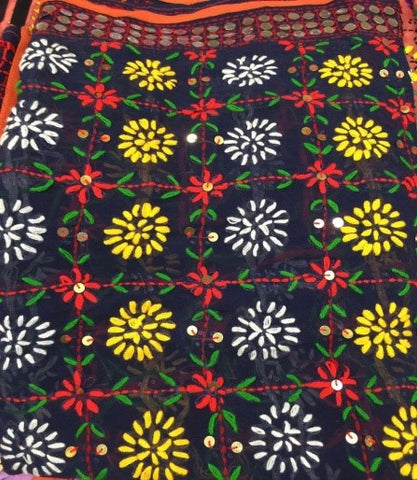
From the lands of five rivers in India, Punjab comes another embroidery style that consists the use of vibrant thread work on thick fabrics like cotton, modal and khadi. As the name suggests, this embroidery style has the motifs of flower on fabric and the most popular type are meenakari and panchranga. This is quite a unique style and it is often found during embroidered cotton kurtas online shopping. The design is created on the back side of the cloth and the final design takes shape on the front side. The contrasting use of bright and light color makes this embroidery style stand out from rest others.
Kashidakari
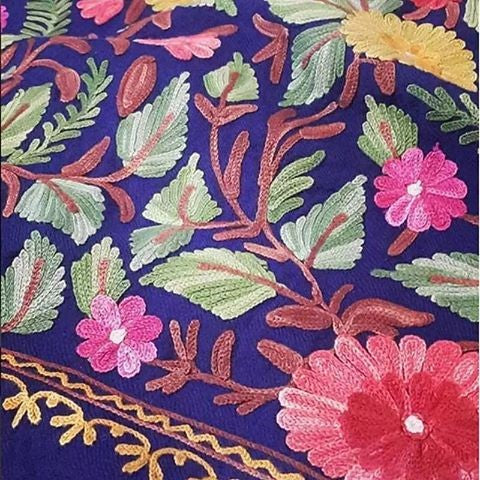
Inspired by the scenic beauty, this beautiful embroidery style comes from beautiful Indian state, Kashmir. This exquisite and elegant embroidery form is believed to evolve in Persia but, there is no stated proof for this. In this distinctive style, the patterns, designs and motifs are heavily inspired from the stunning flora and fauna of the state and it is generally found on dress materials, Kashmiri shawls, bed covers, purses and more. Mostly done on wool and silk, this style of embroidery has become quite a global rage in past few decades.

